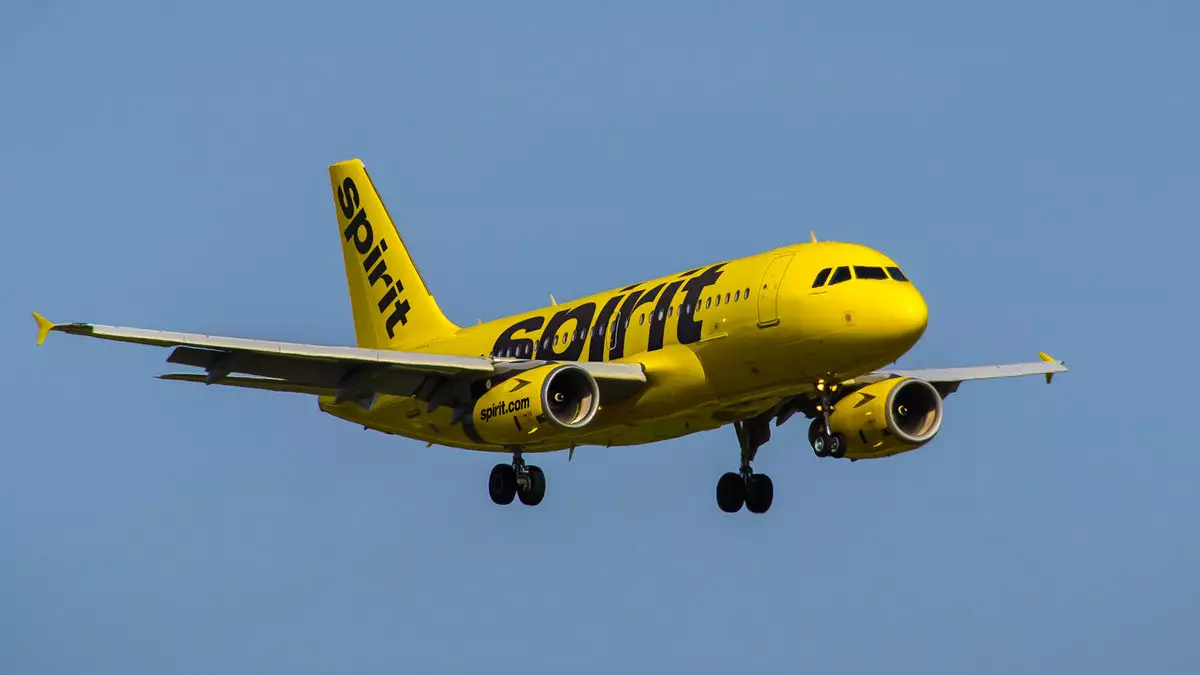Spirit Airlines recently faced significant stock declines after a revealing report from the Wall Street Journal indicated that the airline is conversing with bondholders regarding a potential Chapter 11 bankruptcy filing. This unexpected news has sent shockwaves through the market, underlining the precarious position Spirit finds itself in. The report, which relied on unnamed sources, shed light on the distress signals from the airline without receiving any official rebuttal. Instead, Spirit deferred to comments made by CEO Ted Christie during a previous earnings call, emphasizing ongoing discussions with bondholders but refraining from providing further insights.
The financial pressures on Spirit are palpable, with the airline facing a deadline of October 21 from its credit card processor to refinance an alarming $1.1 billion in loyalty program-backed debt due in the coming year. The company, as of the end of the second quarter of 2023, carried a staggering total long-term debt exceeding $3.1 billion. These figures paint a troubling picture of an airline grappling with the repercussions of the COVID-19 pandemic, which has dramatically altered consumer travel preferences, favoring higher-end services over discount options. In light of these obligations, a Chapter 11 bankruptcy filing, while not immediate, looms as a stark possibility in the discussions surrounding the airline’s financial future.
The challenge for Spirit is not merely financial; it operates under substantial operational strain as well. The airline recorded a monumental operating loss of $360 million during the first half of the year, resulting in a loss margin of nearly 12%. This situation was exacerbated by an overall operating loss of $496 million halfway through 2023. Striving to restore financial health, Spirit previously considered a merger with JetBlue, but that plan was thwarted by antitrust concerns raised by the U.S. Department of Justice. In an attempt to mitigate ongoing losses, Spirit has been compelled to cut its route offerings dramatically, with recent analyses indicating a reduction of 50 to 60 routes slated for the upcoming months.
Spirit’s plight must be evaluated against the broader backdrop of the airline industry as it continues to recover from the pandemic’s upheaval. While out-of-court restructuring has been a focal point in discussions, hints of stricter bankruptcy negotiations signal a turbulent road ahead. Effective debt management and realignment of operational strategies will be central to Spirit Airlines’ survival. Stakeholders will no doubt be closely monitoring these developments as Spirit navigates a landscape characterized by unpredictability and fierce competition. The resolution of this crisis may ultimately define the airline’s future, either marking a turnaround or leading to a more drastic overhaul that could reshape its business model permanently.
Spirit Airlines must confront its financial woes head-on, balancing immediate crisis management actions with long-term strategic planning. The coming months will be critical in determining whether the airline can stabilize itself or if it will succumb to the mounting financial pressures it currently faces.


Leave a Reply